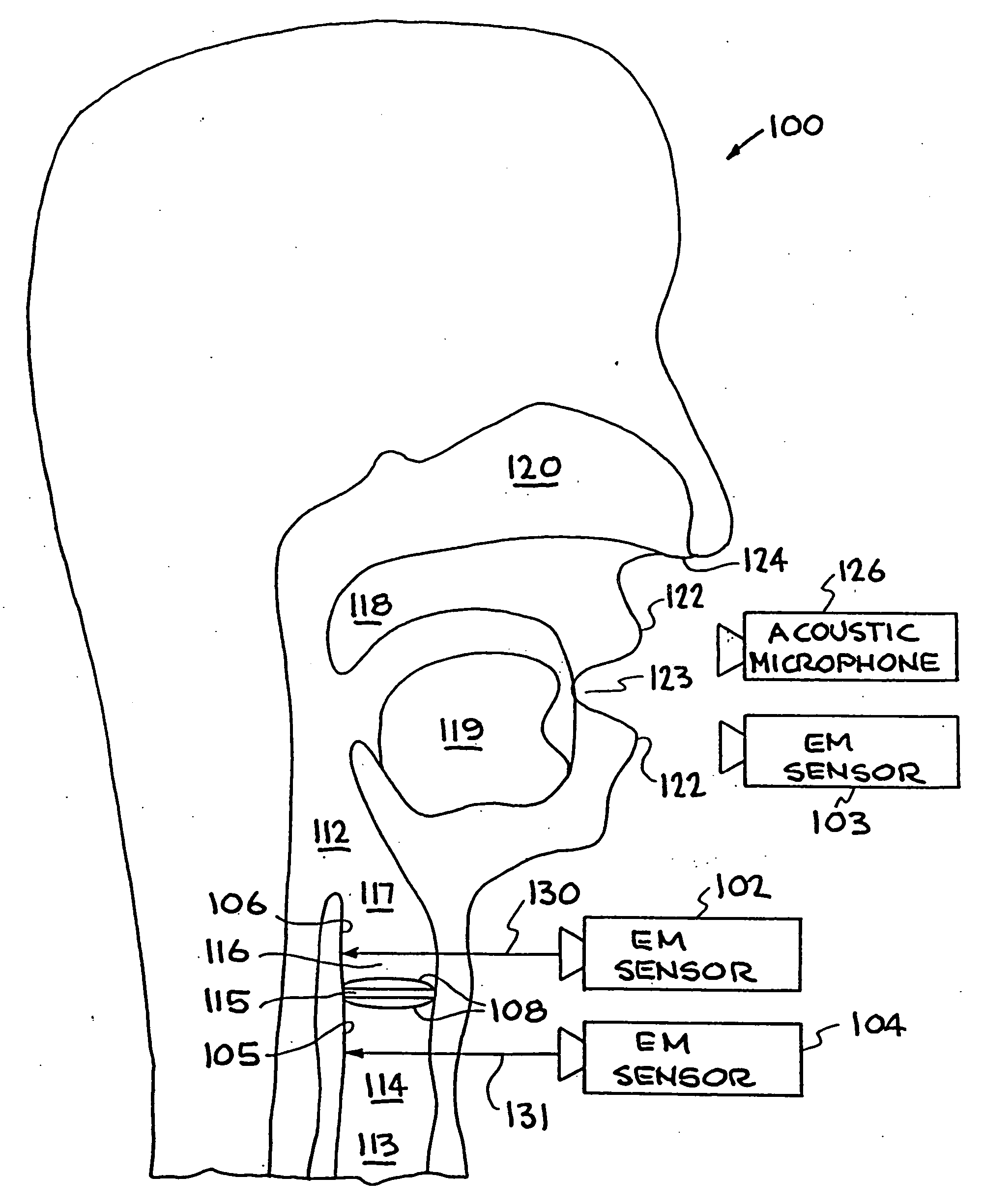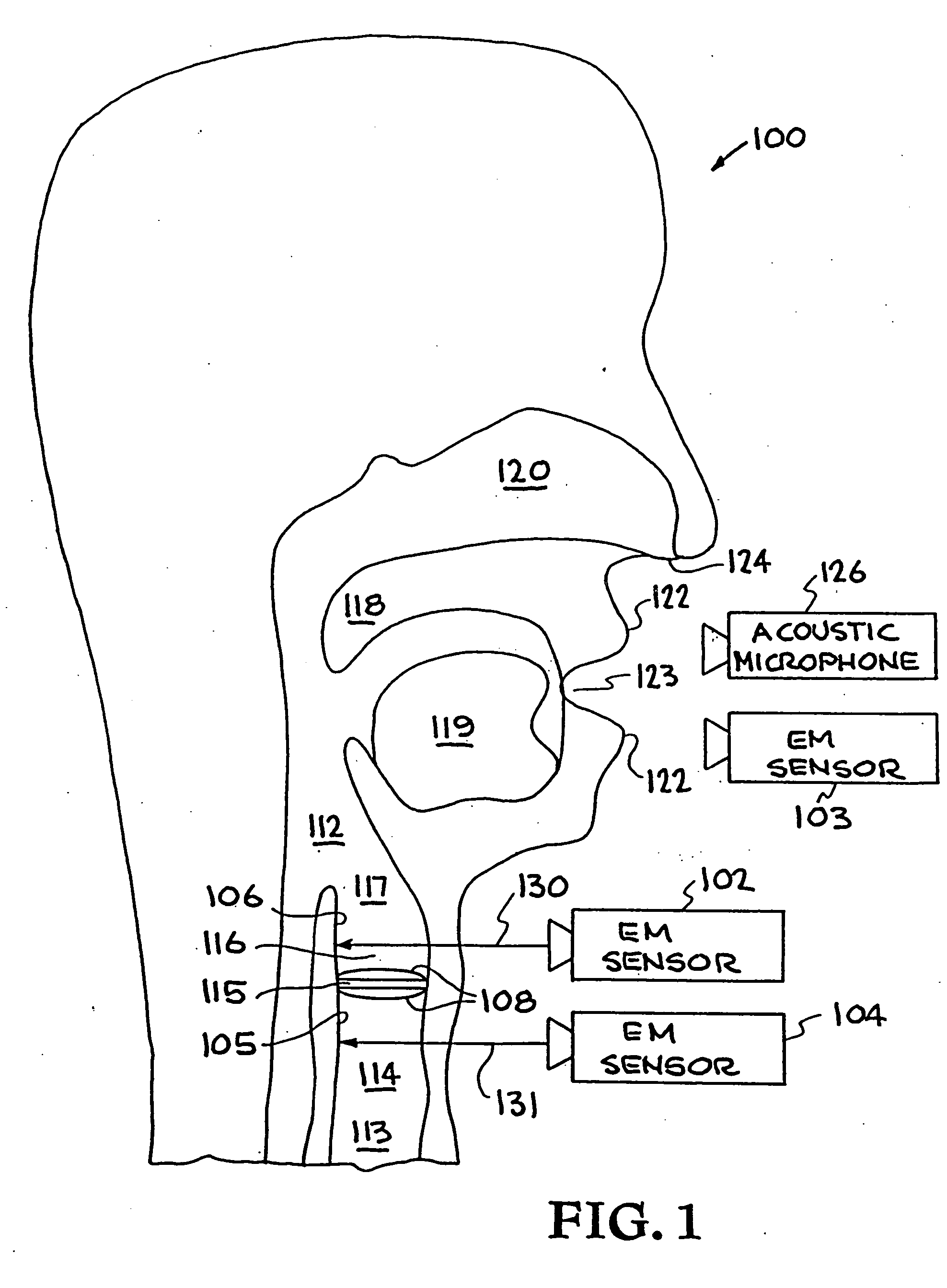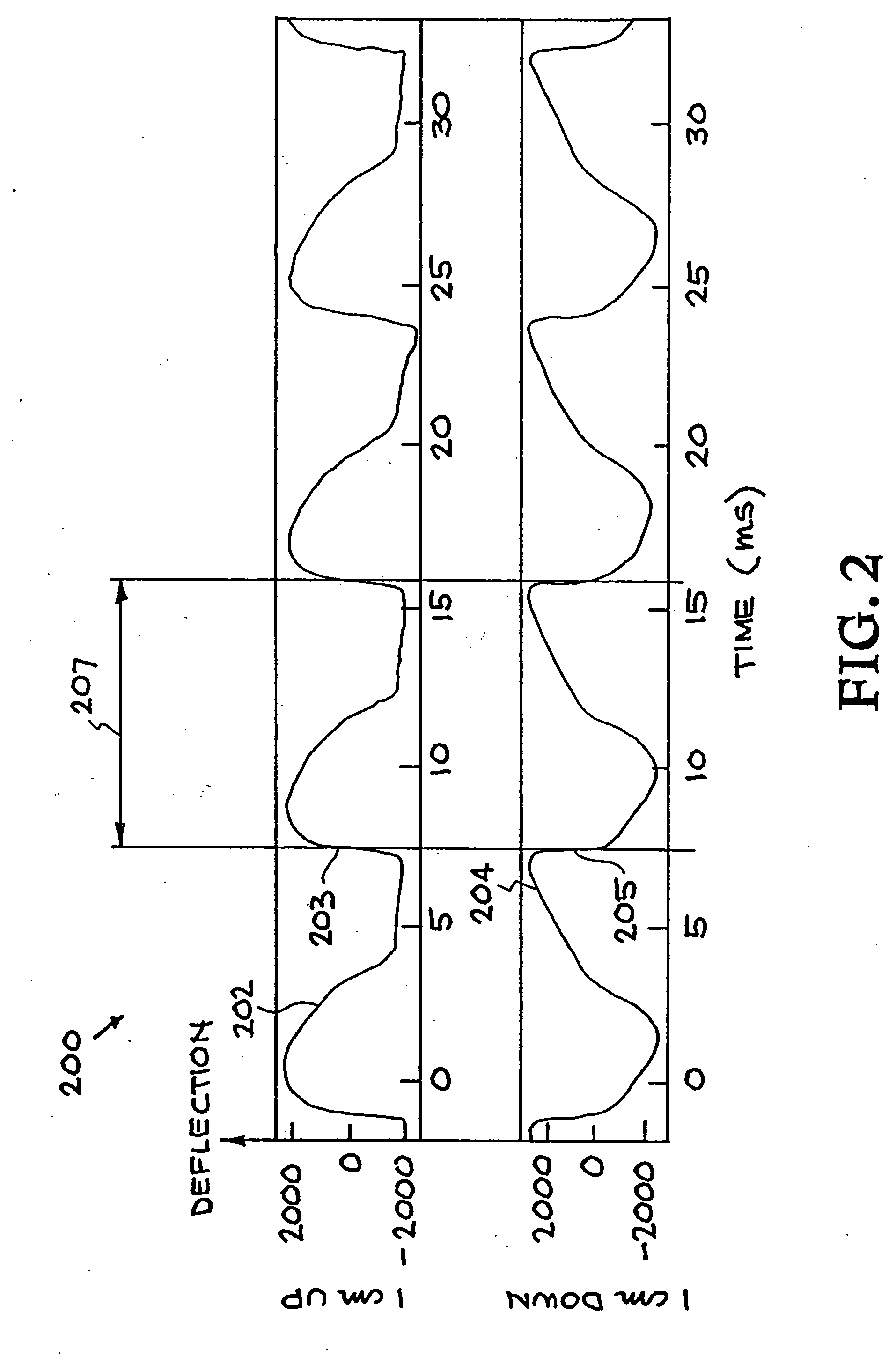System and method for characterizing voiced excitations of speech and acoustic signals, removing acoustic noise from speech, and synthesizing speech
a voice excitation and voice technology, applied in the field of automatic description of human speech, can solve the problems of inadequate information of existing acoustic speech recognition systems for recognizing words and sentences with high probability, and the performance of such systems also drops rapidly, so as to remove unwanted acoustic noise
- Summary
- Abstract
- Description
- Claims
- Application Information
AI Technical Summary
Benefits of technology
Problems solved by technology
Method used
Image
Examples
Embodiment Construction
[0038]FIG. 1 is a pictorial diagram 100 of positioning of EM sensors 102 and 104 for measuring motions of a rear trachea wall 105 and a rear supra-glottal wall 106. These walls 105, 106 are also called windpipe walls within this specification. A first EM sensor 102 measures a position versus time (herein defined as motions) of the rear supra-glottal wall 106 and a second EM sensor 104 measures a position versus time of the rear tracheal wall 105 of a human as voiced speech is produced. Together or separately these sensors 102 and 104 form a micro-power EM sensor system. During voiced speech, vocal folds 108 open and close causing airflow and air pressure variations in a lower windpipe 113 and vocal tract 112, as air exits a set of lungs (not shown) and travels the lower windpipe 113 and vocal tract 112. Herein this process of vocal fold 108 opening and closing, whereby impulses of airflow and impulses of pressure excite the vocal tract 112, is called phonation. Air travels through t...
PUM
 Login to View More
Login to View More Abstract
Description
Claims
Application Information
 Login to View More
Login to View More - R&D
- Intellectual Property
- Life Sciences
- Materials
- Tech Scout
- Unparalleled Data Quality
- Higher Quality Content
- 60% Fewer Hallucinations
Browse by: Latest US Patents, China's latest patents, Technical Efficacy Thesaurus, Application Domain, Technology Topic, Popular Technical Reports.
© 2025 PatSnap. All rights reserved.Legal|Privacy policy|Modern Slavery Act Transparency Statement|Sitemap|About US| Contact US: help@patsnap.com



